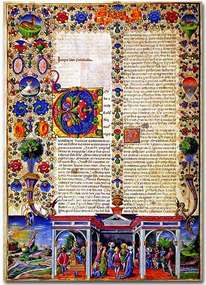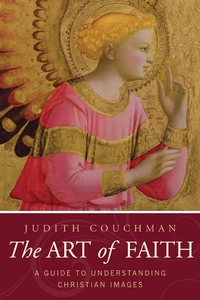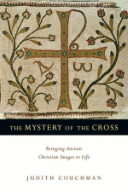In the early centuries after Christ’s departure, his followers became the People of the Book. Christians read, revered, and thrived according to the Scriptures, a combination of ancient Jewish and Christian apostolic texts written through the Holy Spirit’s inspiration.
Because Christians considered the Bible sacred and the rule for godly living, devout leaders and laypeople insisted on its preservation in successive centuries. This meant copying the text by hand onto manuscripts read privately by the clergy and aloud to parishioners at church services. Most Christians could not read, so hearing the Bible’s words proved crucial for understanding and living their faith. Even if a layperson could read, it required influence and wealth to create a biblical manuscript for personal use. Commissions belonged to royalty, the wealthy, or selected clergy.
In the Middle Ages and Renaissance, from the fifth through the fifteenth centuries, manuscript illumination grew into a significant art form. It developed into an elaborate marriage of words and images. The Latin word manuscript translated to “written by hand” and illumination meant “to light up.” In scriptoriums around Europe, scribes and artists illuminated texts with beautiful, expensive, and precious materials to commemorate important texts. They created small pocket Bibles for traveling missionaries, luxurious gospels for emperors, prayer books for aristocrats, and scriptures for working priests and secluded monks. Due to the intensive hand work, elongated time, and significant talent required to create a medieval Bible, whoever held or listened to one considered it a treasure. Page by page, it honored and affirmed their faith.
Unfortunately, as formal education spread, illuminated manuscripts couldn’t serve the needs of increasingly literate Christians. The intricate handwriting and painting process all but vanished, replaced by the printing press. The Gutenberg Bible, printed in the fifteenth century, ushered in a more efficient way to produce and distribute sacred literature. Eventually the masses could hold Bibles—or the Reformation’s religious propaganda—in their own hands and read for themselves. Engravings and woodcuts decorated the pages, and books no longer safeguarded one-of-a-kind artwork.
From an artistic standpoint, Christians traded beauty and mastery for the ability to spread God’s Word faster and farther. But we can hardly blame them. They stepped ahead with progress, following Christ’s command to preach the Gospel throughout the world. Above all, they were People of the Book.
Learn more about Christian art and illuminated manuscripts in The Art of Faith by Judith Couchman. Available at amazon.com and paracletepress.com.

 RSS Feed
RSS Feed



